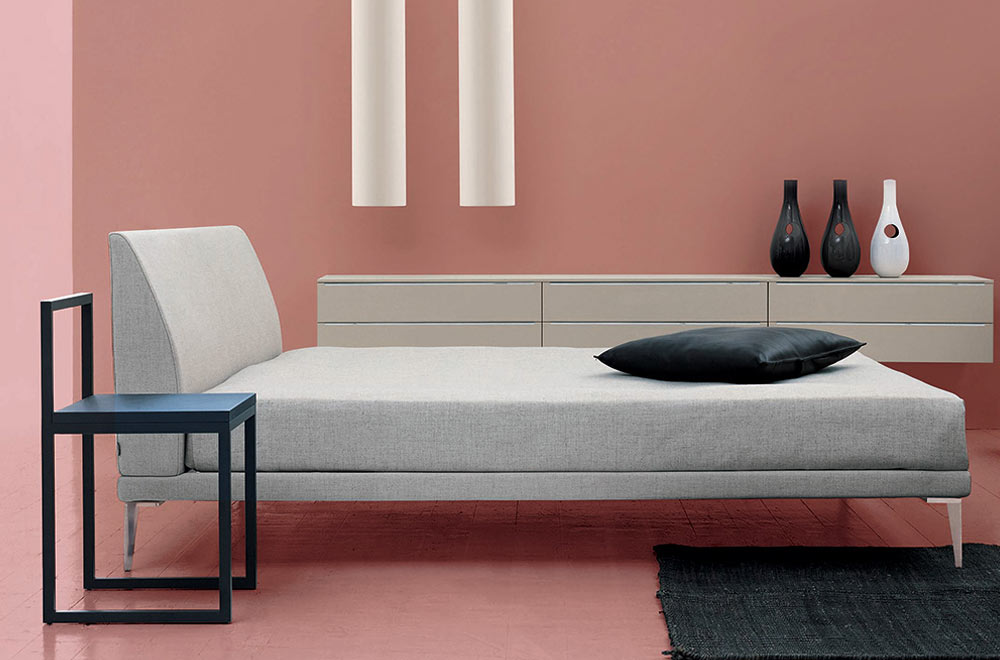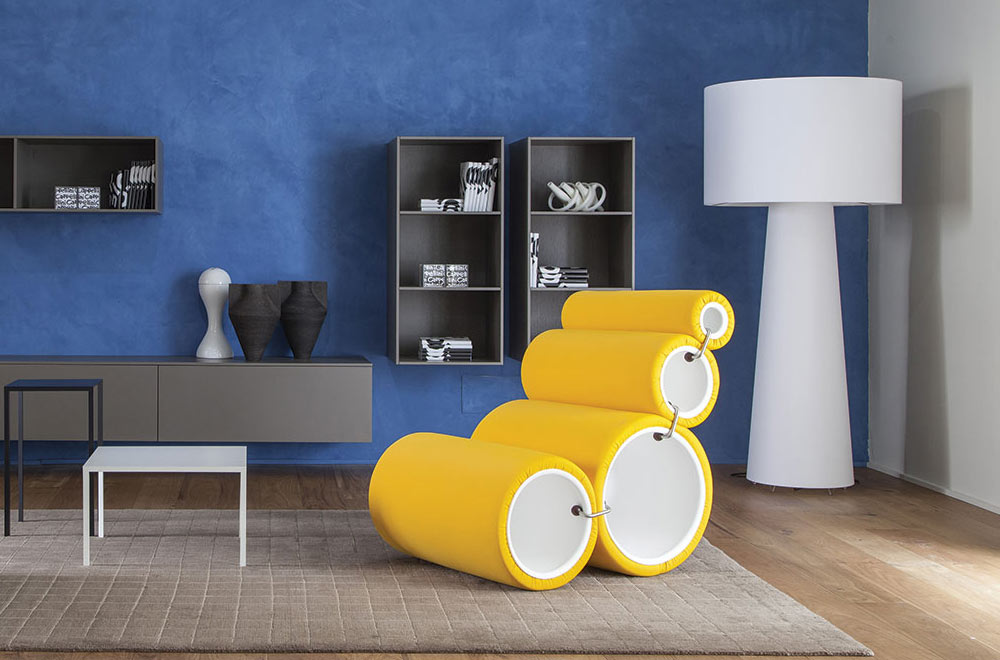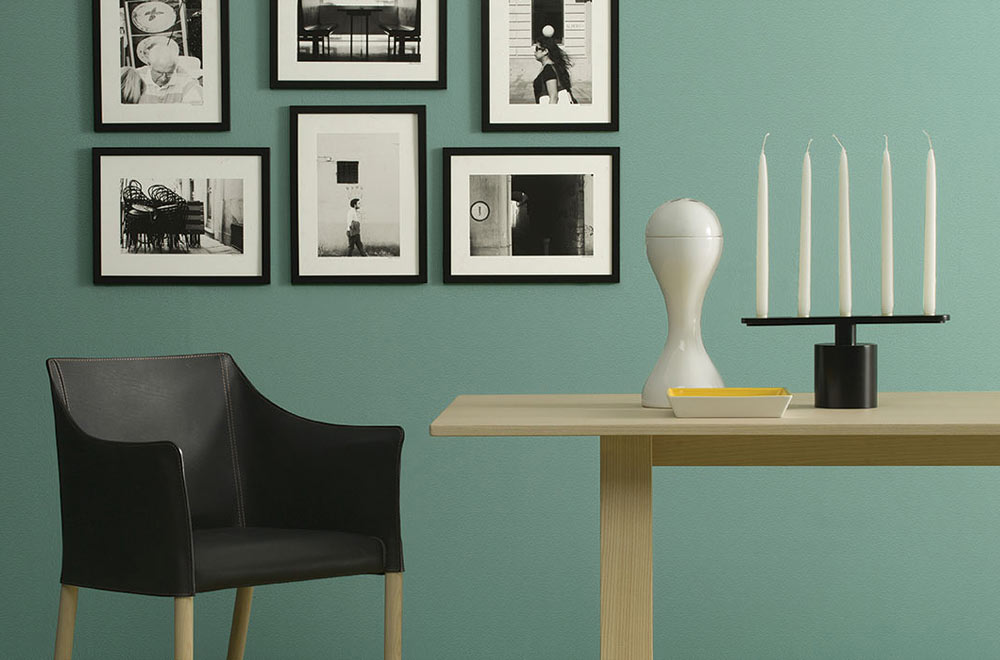Modular and flexible, essential and customizable: the Tube Chair – an iconic presence in the permanent collections of the Triennale in Milan, and the MoMA and Metropolitan Museum of Art in New York – has undergone a contemporary renovation using new avant-garde technical advancements that ensure all the characteristics of Joe Colombo’s original design remain unaltered. A cross between a chaise longue and a canapé, an object of design and the authentic reflection of a lifestyle, Tube Chair defies time with its emblematic, mutable appearance.
Created in 1969, the seat is based upon a completely de-structured design: In fact, it is composed of four hollow cylinders made with a rotational moulding process to obtain interchangeable elements that can be assembled assembled at will and fastened together in a compact manner. From the backrest to the seat, each unit can be placed in multiple positions, giving life to an element of design that reflects one’s individual needs and tastes.
The tubes that compose the chair are fastened by metal clamps. The upholstery is available in leather or bi-elastic fabric. The chromatic palette includes Cappellini’s signature colours: white, black, yellow, turquoise and orange.
62W x 115D x 66H cm
Joe Colombo studied at the Polytechnic of Milan and the Brera Art Academy. After an important, albeit brief, escapade with informal painting, he decided to devote himself entirely to design and architecture. In 1954, he participated in an exhibition at the 10th Triennale, and in 1956 his first architectural project was completed in Milan, in via Rosolino Pilo.
A precursor of the study of ergonomic design, he developed unique products with a dynamic sculptural appearance.
Many of his objects are considered milestones of design and are part of the collections of the world’s most important museums, such as the MoMa and the Metropolitan Museum of Art in New York.


















